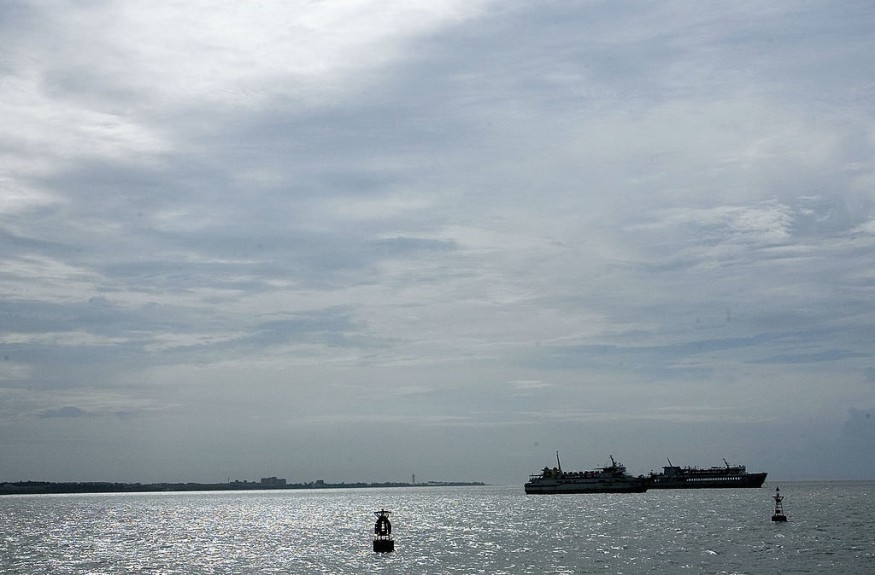A recent study said that Sargasso Sea near Bermuda has drastically increased in salinity and acidity due to the impacts of climate change. Experts said that ocean physical and biogeochemical conditions are rapidly changing over time.
Forty years of observations from 1983 to 2023 collected at the Bermuda Atlantic Time-series Study (BATS) site near Bermuda in the North Atlantic Ocean has shown continuing trends of surface warming, increase in salinity, loss of dissolved oxygen (DO), increase in carbon dioxide (CO2), and ocean acidification (OA) effects.
The study pointed out that updating of data and trends at the BATS site has depicted how ocean chemistry of the 2020s is now outside the range observed in the 1980s, and how essential these data are for predicting the response of ocean chemistry and marine ecosystems to future shifting earth and ocean conditions.
Change in Salinity and Acidification

Experts noted that surface and water column ocean data between 1983 and 2023 were collected at two sustained ocean time-series sites in the Sargasso Sea (North Atlantic Ocean) off the island of Bermuda.
They said that Hydrostation S (also termed as the Panulirus site in earlier years) is located at an ocean site approximately 25 km southeast of the island Bermuda (at ~32°10'N, 64°30'W) in the Sargasso Sea, which is part of the oligotrophic gyre of the North Atlantic Ocean.
Meanwhile, the BATS site is located ~80 km southeast of the island (at ~31°40′N, 64°10′W; Michaels and Knap, 1996) with comprehensive monthly sampling of ocean physics, chemistry, and biology collected since October 1988.
Scientists said that the seasonality of the Sargasso Sea has been well documented ever since other experts documented the annual cycle of physics and biology in the upper ocean off the island of Bermuda.
Since the early 1960s, sustained observations at BATS and Hydrostation S have revealed complex linkages and interactions between local-scale physics with the biology and biogeochemistry of the Sargasso Sea (i.e., the North Atlantic subtropical gyre) and the whole North Atlantic Ocean-Arctic Ocean system.
It was explained that the surface of the Sargasso Sea shows a typical seasonality of temperature with a range of ~9-11°C and with summertime highs of ~28-30°C and wintertime lows of ~18-20°C.
Meanwhile, surface salinities are higher in wintertime (~36.67) and fresher in summer (~36.45) with a seasonal range of ~0.2 to ~0.3.
Read Also : Atlantic Waters Near Bermuda Has Decreased Oxygen Levels Due to Ocean Acidification [Study]
Seasonality In Salinity
It was proven that the seasonality in salinity generally reflects freshening associated with precipitation in the summertime distributed within a shallower mixed layer (~20-30 m), while precipitation in the wintertime is distributed through a much deeper mixed layer.
The gradual rise in ocean temperatures is an inevitable outcome of Earth's energy balance, with a faster rate of warming since the 1990s, according to the study.
The warming and increasing stratification of the upper ocean in the Sargasso Sea has been reported with earlier datasets, but in the recent study, the warming reported is of sufficient length of time to be statistically significant.
The study said that the acidity of the Sargasso Sea has increased by 30% to 40% in the last 40 years.
It explained that the rise of carbon dioxide in the atmosphere from the burning of fossil fuels leads to carbon dioxide dissolving into the ocean.
This later increased its acidity as the dissolved gas turns into carbonic acid, as well as carbonate and hydrogen ions.
Related Article : Bermuda Triangle Mystery Solved? Experts Point to 'Killer Clouds'
© 2025 NatureWorldNews.com All rights reserved. Do not reproduce without permission.





